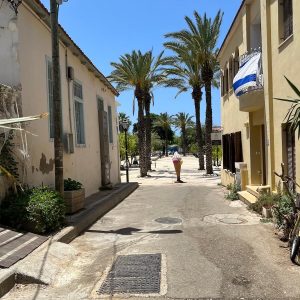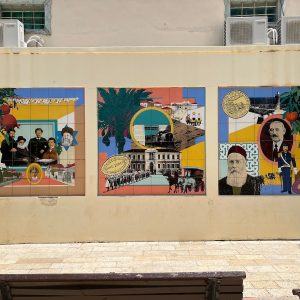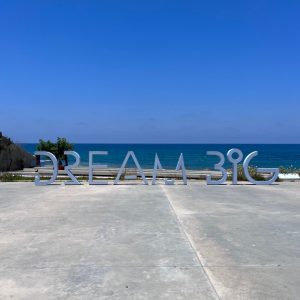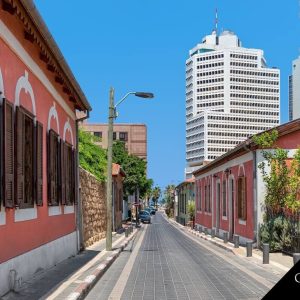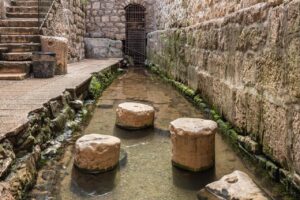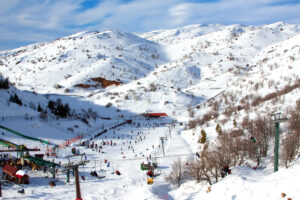1. Hotel Pick Up
Begin your experience with a convenient hotel pick-up in Tel Aviv, where you’ll meet your guide and set off on foot to the tour’s starting point. As we stroll through the vibrant streets of Tel Aviv, you’ll get an immediate sense of the city’s lively atmosphere and architectural diversity, setting the stage for a day of exploration and discovery.
2. The Old Train Station
In 2018, the new train from Tel Aviv to Jerusalem was inaugurated, and at once the journey between the two cities was shortened to half an hour. If you were surprised that it only happened a few years ago, you are not the first: Mark Twain, on a visit to the area in the mid-19th century, complained that there was no train. The construction of the train from Jaffa to Jerusalem was part of the transformation that the country underwent in the 19th century, and here we will begin our tour.
3. Neve Tzedek
We will continue to the magical streets of Neve Tzedek, where we’ll explore a series of cultural gems. Our stops include the Suzanne Dellal Centre, a hub for dance and performance arts, and the historic “Eden” Cinema, one of Tel Aviv’s first movie theaters. We will also visit Aharon Shlush’s House, offering a glimpse into the architectural heritage of early Tel Aviv, and conclude at the Nahum Gutman Museum, which celebrates the work and life of one of Israel’s most beloved artists, encapsulating the spirit of the city’s early days.
4. Shalom Tower
“Migdal Shalom” (Shalom Tower) is known as Tel Aviv’s first skyscraper. Originally, it was the site of the Herzliya Gymnasium, a pioneering Hebrew high school. Its demolition in the 1960s sparked protests that led to the creation of the “Site Preservation Authority” in Israel. On our tour, we’ll visit Migdal Shalom and its exhibition, showcasing Tel Aviv’s development and cultural heritage through photographs and artifacts.
5. The Independence Hall
Our tour concludes at Independence Hall, 16 Rothschild Boulevard, where Israel’s Declaration of Independence was signed. This historic site marks Tel Aviv’s role in the nation’s founding. Nearby, a monument by artist Aharon Freiber and sculptor Hannah Orlov honors the 66 founding families of Ahuzat Beit, which became Tel Aviv. Here, we see the contrast between the small Tel Aviv of the 1930s and today’s tech-driven city, highlighting its growth into the “Silicon Valley” of the Middle East. This fittingly ends our exploration.

